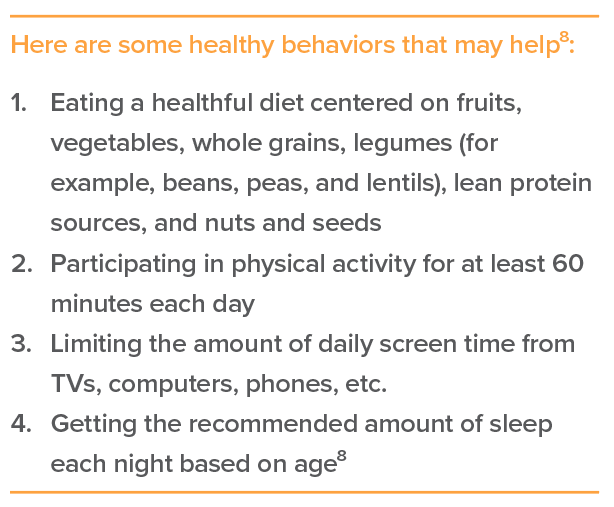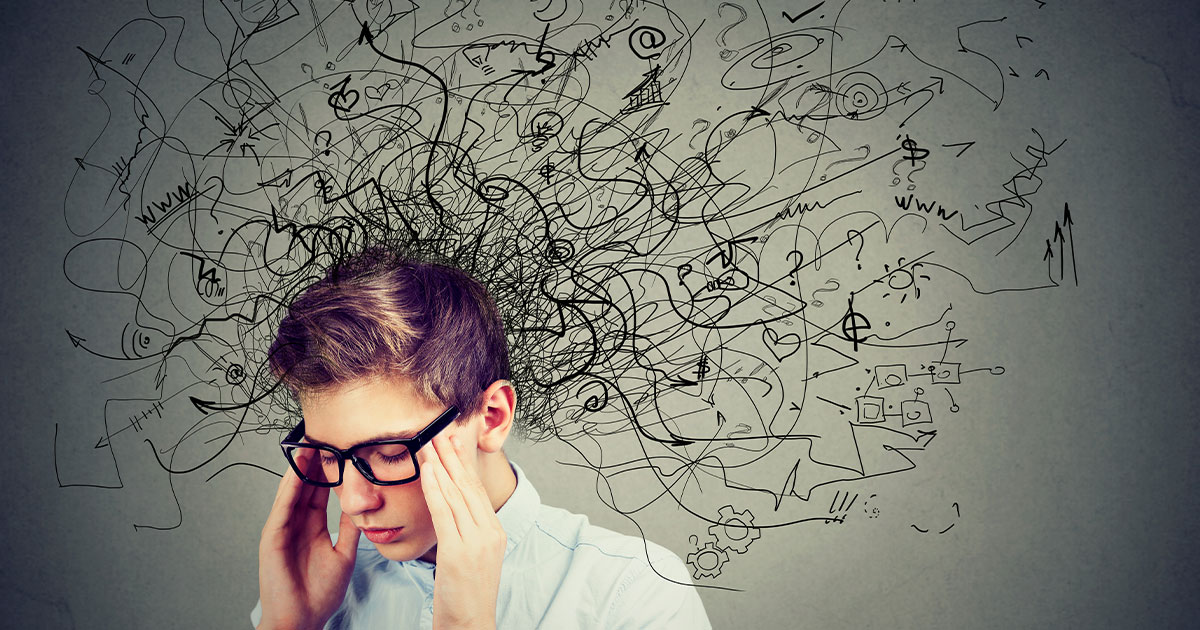If you are reading this to find out the difference between attention deficit/hyperactivity disorder (AD/HD) and attention deficit disorder (ADD), the fact is, there isn’t a difference. ADD is simply an outdated term for AD/HD, a neurobehavioral disorder that interferes with a person’s ability to stay on task, pay attention, control impulsive behaviors, and in some cases, causes a person to be overly active1. According the Centers for Disease Control and Prevention, 11% of children and teens and 4% of adults in the United States have been diagnosed with AD/HD2.
The group of behaviors that make up AD/HD have been recognized since 1902, though the name has changed over time. The Diagnostic and Statistical Manual of Mental Disorders (DSM) is the authority on diagnosing any mental or neurological disorder3.
According to the DSM, there are three presentations of AD/HD:
1. Inattentive AD/HD
Six of the following symptoms must be present and causing a severe impact at school or work to merit a diagnosis of Inattentive AD/HD⁴.
- Often fails to give close attention to details or makes careless mistakes
- Often has difficulty sustaining attention
- Often does not seem to listen when spoken to
- Often does not follow through on instructions and fails to finish projects
- Often has difficulty organizing tasks and activities
- Often avoids, dislikes, or is reluctant to engage in tasks that require sustained mental effort
- Often loses things necessary for tasks or activities
- Is often easily distracted by extraneous stimuli
- Is often forgetful in daily activities
2. Hyperactive-Impulsive AD/HD
To have this type, a person must have 6 or more of the following symptoms:⁴
- Fidgets with hands or feet or squirms in seat
- Leaves seat in classroom or in other situations in which remaining seated is expected
- Runs about or climbs excessively in situations in which it is inappropriate (in adolescents or adults, may be limited to subjective feelings of restlessness)
- Has difficulty playing or engaging in leisure activities quietly
- Appears “on the go” or acts as if “driven by a motor”
- Talks excessively
- Blurts out the answers before the questions have been completed
- Has difficulty awaiting turn
- Interrupts or intrudes on others (e.g., butts into conversations or games)
3. Combined Type AD/HD
Combined Type AD/HD occurs when someone has 6 or more symptoms of inattention, and 6 or more symptoms of hyperactivity and impulsivity. Men and boys more commonly have hyperactive symptoms, while women and girls more commonly have inattentive. Because of this, men are more commonly diagnosed than women, as their symptoms are more easily recognizable as AD/HD⁴.

Diagnosis of AD/HD
The diagnosis of AD/HD requires a comprehensive evaluation by a licensed clinician, such as a pediatrician, psychologist, or psychiatrist with expertise in AD/HD⁵. For a person to receive a diagnosis of AD/HD, the symptoms of inattention and/or hyperactivity-impulsivity must be chronic or long-lasting, impair the person’s functioning, and cause the person to fall behind normal development for his or her age⁵. The doctor will also ensure that any AD/HD symptoms are not due to another medical or psychiatric condition. Most children with AD/HD are diagnosed during the elementary years. For an adolescent or adult to receive a diagnosis of AD/HD, the symptoms need to have been present prior to age 12⁵.
What does ADHD look like in adults?
Children with AD/HD commonly become adults with AD/HD, but they often find that their symptoms have changed – the hyperactivity in childhood becomes extreme restlessness, they may develop a reliance on drugs, and they may be more disorganized⁶.
Adults with inattentive AD/HD may make careless mistakes, lose interest quickly, and struggle to follow verbal instructions⁶. They can come off as lazy, disinterested, or forgetful, and they may live with these false, hurtful labels well into their adult life⁶. We hear stories of adults who grew up feeling defective or unworthy, never suspecting they had AD/HD until their child was diagnosed. To avoid the continued epidemic of missed diagnoses, it’s important for medical professionals to recognize all presentations of AD/HD, as well as related conditions often mistaken for AD/HD⁶.
Treatment
Some people respond well to medication. The most common medication used is a stimulant⁷. Even though this seems strange, the stimulant helps the parts of the brain involved in focusing attention and resisting impulses⁷. There are many different forms of stimulants, and a person may react better to one than to another⁷. Side effects may include decreased appetite, problems sleeping, or headaches and stomachaches⁷. The healthcare provider will watch for more rare side effects as well. Some people may be helped by behavioral therapy. Neither medication nor behavior modification cure AD/HD, but they do help manage the symptoms and help the person to be successful⁷.
Managing the symptoms of AD/HD is a key part of treatment. Being healthy is important for everyone and can be especially important for people with AD/HD. In addition to behavioral therapy and medication, having a healthy lifestyle can make it easier to deal with AD/HD symptoms.

The more we understand about AD/HD and how it is displayed in different people, the more effective treatments can be made. If you or someone you know has symptoms of AD/HD, or if you would like more information about AD/HD, contact your Healthcare provider.
©2022HealthSpot References: (1) https://www.ninds.nih.gov/Disorders/All-Disorders/Attention-Deficit-Hyperactivity-Disorder-Information-Page (2) Center for Disease Control and Prevention. 2018. Attention-Deficit/Hyperactivity Disorder (ADHD) https://www.cdc.gov/ncbddd/adhd/data.html (3) Low, K. (2017, February 14). Is ADD the same thing as ADHD. Retrieved from https://www.verywell.com/is-add-the-same-thing-as-adhd-20467 (4) Russo, A. (2018). ADD symptoms versus ADHD symptoms: what’s the difference. Retrieved from https://www.additudemag.com/add-adhd-symptoms-difference (5) National Institute of Mental Health. March 2016. Attention Deficit Hyperactivity Disorder. Retrieved from https://www.nimh.nih.gov/health/topics/attention-deficit-hyperactivity-disorder-adhd/index.shtml (6)Gentile, J. P., Atiq, R., & Gillig, P. M. (2006). Adult ADHD: Diagnosis, Differential Diagnosis, and Medication Management. Psychiatry (Edgmont), 3(8), 25–30 (7) Goodman, D.M. and Livingston, E.H. 2013. Attention deficit/hyperactivity disorder. JAMA. 2013;309(17):1843. doi:10.1001/jama.2013.803 (8) Center for Disease Control and Prevention. May, 2017. Attention Deficit/Hyperactivity Disorder. Retrieved from https://www.cdc.gov/ncbddd/adhd/facts.html

